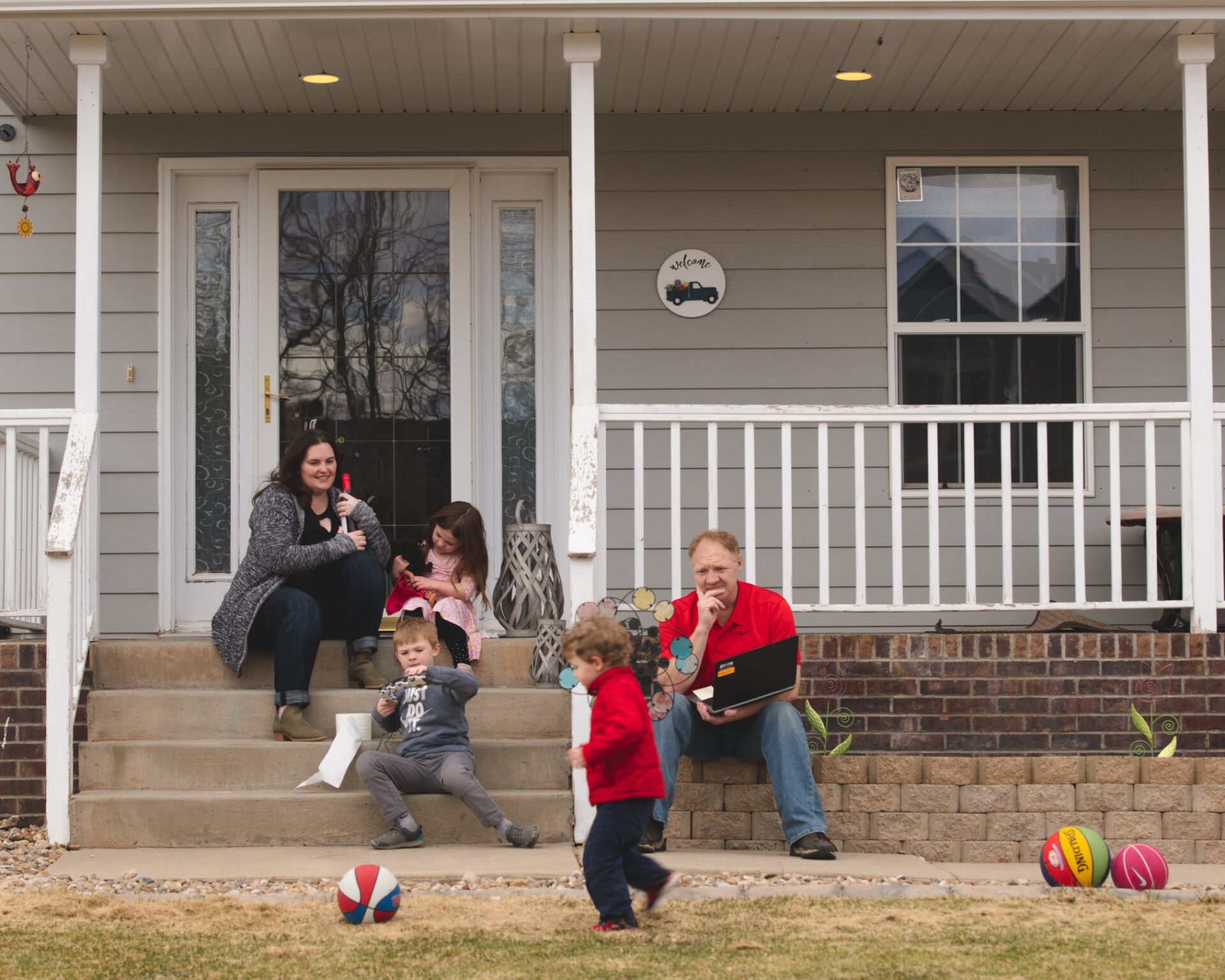Cleveland, OH. It seems odd to talk about two realities, now reduced to mere fantasies, in today’s climate: front porches and the American Dream. Once upon a time, the front porch was the quintessential manifestation of the American Dream: middle-class property ownership, family life, and communal presence. Any hope of restoring the American Dream necessitates the restoration of the front porch.
Bauhaus and other Modernist architectures perfectly encapsulate the contemporary crisis. Disorder. No vitality. Dreary. Downright repellent and repulsive. Despite the talk of new high rises and other new trends in architecture, whenever we see a beautiful front porch, even a modest-sized and standard front porch, we can’t help but gaze at it with nostalgia and sense of serenity.
All the resistance and discontent over lockdowns and isolation are somewhat ironic since most of us have been in a self-imposed lockdown and isolation long before the COVID pandemic. The comforts and entertainment offered by modern technology—those evil tech monopolies we’re all rightly skeptical and nervous of but don’t want destroyed because it would take away the 8 PM Netflix ritual catharsis—keep us sheltered in place. Who cares about the sun when one can kick back and relax while eating popcorn and watching the latest politically-correct television show touted as the “can’t miss” watch according to our philistine vandals of de-culturalization?
The front porch is ridiculed by the establishment because it poses a threat to the neo-feudalist dreams of technological oligarchy. The front porch is situated outside, with a clear view of the street, and is a place where we can leisurely enjoy two of life’s supreme goods: nature and neighbors. It is a place to commune with God’s creation, to bask in the glow of the sun and the clouds, the birds and the deer, rather than remain shackled to the latest hashtag trend on Twitter or your preferred social media app where you post your political rant with self-righteous eloquence.
Yet the front porch, in the midst of the turbulence of the coronavirus, has been experiencing a renaissance by those homeowners who have the blessing of one. Some people, and families, have taken the opportunity to return to the world outside their front door, enjoy the views of nature and their neighbors, and have rekindled that old habit of impromptu conversation. Turns out, the suffocating burden of forced confinement has led to finding some refuge on the front porch.
Josef Pieper wrote that leisure is the basis of culture. Pieper writes, “Leisure . . . is a mental and spiritual attitude—it is not simply the result of external factors, it is not the inevitable result of spare time, a holiday, a weekend or a vacation. It is, in the first place, an attitude of mind, a condition of the soul.” He continues, with clear-eyed vision and lucidity rare in today’s academic and intellectual climate, “Leisure is only possible when a man is at one with himself, when he acquiesces in his own being. . . . It is not only the occasion but also the capacity for steeping oneself in the whole of creation.”
The front porch has been a locus of American culture precisely because of the way it forms our “attitude of mind” and “condition of the soul.” The front porch is the place where we step out into “the whole of creation” and participate in the waltz of life: from plants to animals to humans, from the created to the social. Moreover, the front porch is the rock of the American dream, the visible gateway into middle-class life, family refuge, and community interactions.
We will never get to know our neighbors, or even anyone on our street or local community, without their soulful presence smiling, reading, drinking, or just enjoying the weather—visible for you to see—on the front porch. Locked up inside a house, it might as well be as if no one is home. Hence why a small 500-foot studio apartment suffices for so many young people today: if they have no children and can connect to their friends via digital devices, why bother with a home?
Walking the streets where houses still have front porches, and doing it on a regular basis, suddenly opens us up to our neighbors. Familiar faces are seen. Conversations are struck. Friendships formed. A smiling presence on the front porch is an invitation to a relationship. The vacant front porch, or no front porch at all, is a lonely sight—uninviting and even frightening. The front porch is where the soul truly enjoys its spare time, “acquiesces in [its] own being,” and becomes an intimate part of “the whole of creation.”
The front porch is the pillar of our communal presence and a doorway into the joys of filial love and comfort. It is on the front porch that we meet and greet our friends and family and become acquainted with new friends and neighbors. The front porch gives shape to the love and happiness that comes with such a life. Flowers adorn the front porch and turn it into a mini-Eden, inviting, welcoming, and serene. The bird feeder invites nature to our window, to become part of our life instead of distant from it. Yes, the front porch offers a microcosm of “the whole of creation” and our place in it.
If the American Dream is to be restored, it will not be restored with more high rises, glass eyesores, and metallic monstrosities that are nauseating and dehumanizing to look at, let alone dwell in. If the American Dream has a future, it is rooted in the beauty and serenity of the front porch. Perhaps, just perhaps, COVID has restored some of the beauty and desirability of the front porch.
Photo credit Amy Oyler

